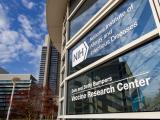Sep 12, 2008 (CIDRAP News) – Public health officials in Hong Kong made headlines in March when they closed schools for 2 weeks to put a damper on an influenza epidemic, but a new report says the measure appears to have had little effect.
Researchers from Hong Kong explored flu surveillance data gathered before, during, and after the outbreak that led to the school closure and reported their findings in an early online edition of Emerging Infectious Diseases.
On Mar 12 after three children died, apparently from seasonal flu, Hong Kong's government announced that all primary schools, special schools, kindergartens, and day nurseries would close for 2 week, the authors reported. The closure, which came a week before the start of the annual week-long Easter break, occurred during the peak of the area's winter flu season.
The closure was Hong Kong's first since the SARS (severe acute respiratory syndrome) epidemic of 2003, and it affected nearly 560,000 children, according to previous reports.
As was true in much of the northern hemisphere, the circulating viruses in Hong Kong did not match well with the seasonal flu vaccine.
According to the research group's review of the surveillance data, the flu season was already waning when officials decided to close the schools. Their review of outpatient consultation data revealed that the 2008 winter flu season was moderately severe compared with the previous 9 years.
The authors found that routine surveillance did not show a large effect from the school closures. They concluded that epidemic curves based on the surveillance data showed that a decline in flu cases after the school closure might have occurred even without any intervention, though they warned that changes in an epidemic curve may lag behind changes in transmission dynamics, as had been shown for SARS.
Their results should be interpreted cautiously, the researchers wrote. "In particular, influenza might have continued to circulate for a longer period had the school closures not been implemented." The authors also acknowledged that other studies suggest school closures can mitigate flu epidemics.
Public officials who decided to close the Hong Kong schools might not have known from the data they had that the flu season was moderate and might have already been declining naturally, the report says. Surveillance system improvements, particularly real-time or near real-time reporting, could help officials make more informed decisions, it adds.
Jeffrey Duchin, MD, chief of communicable disease control for Seattle King County Public Health in Washington, told CIDRAP News that it isn't surprising that the study didn't detect a benefit from school closure late in a flu season. "After all, most persons in the community would have already been infected," he said.
Given the relative mildness of the season, indirect indicators of flu activity would have been less sensitive, he said, adding that it's difficult to study the impact of school closures on transmission retrospectively, because schools typically close late in the flu season.
"The cost-benefit of closing schools in seasonal epidemics that are not at the high end of the severity scale is probably low, and few if any close early [in the season]," Duchin said. Real-time surveillance might be especially important in more severe flu epidemics, in which officials would need to gauge the impact of school closure, he said.
Cowling BJ, Lau EHY, Lam LH, et al. Effects of school closures, 2008 winter flu season, Hong Kong. Emerg Infect Dis 2008 Oct (early online release);14(10):[Full text]
See also:
Mar 13 CIDRAP News story "Flu prompts 2-week school closure in Hong Kong"




















